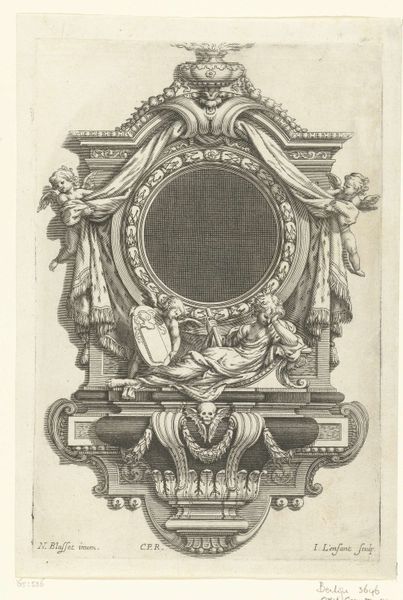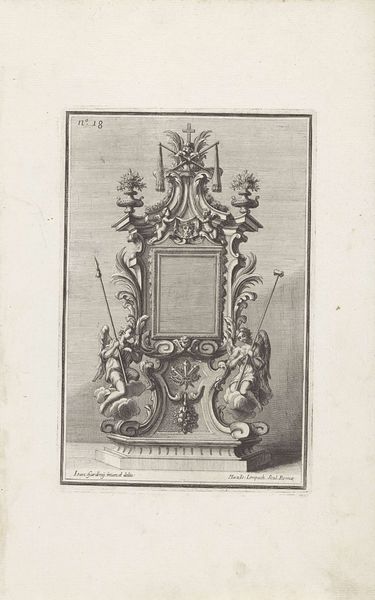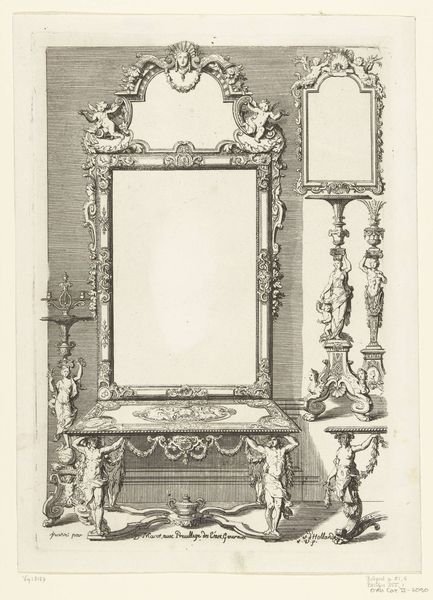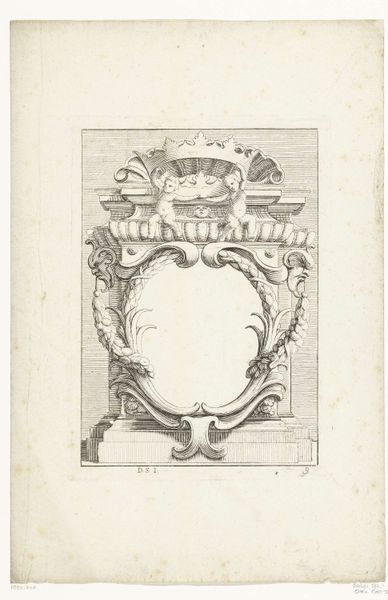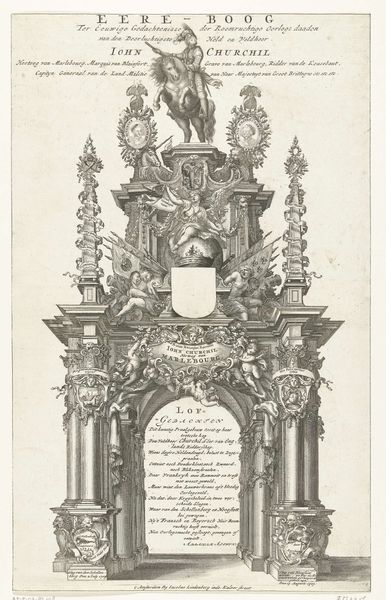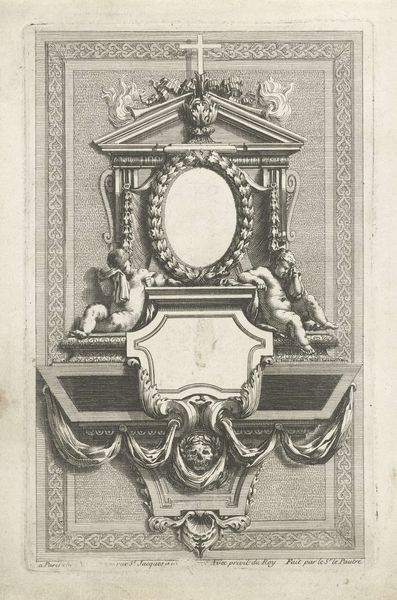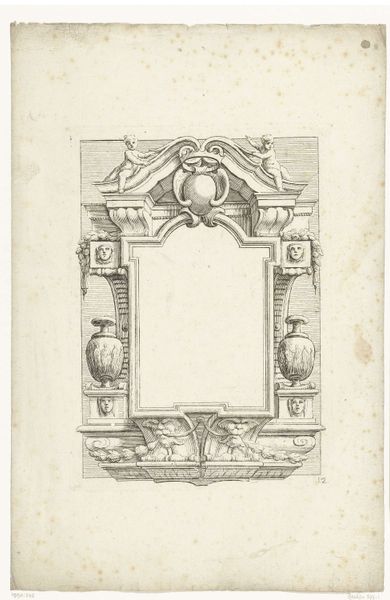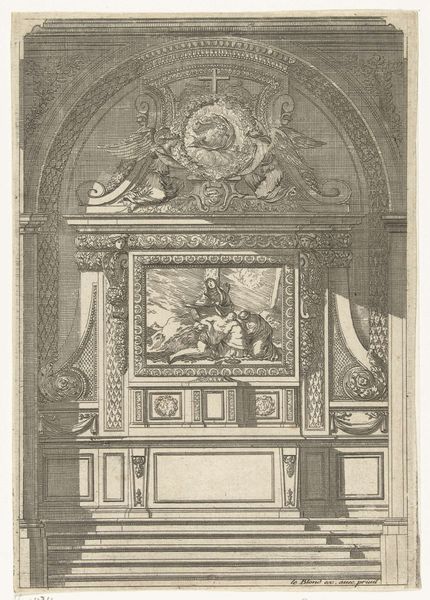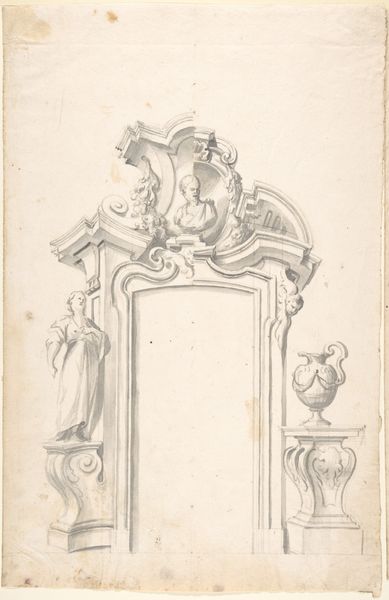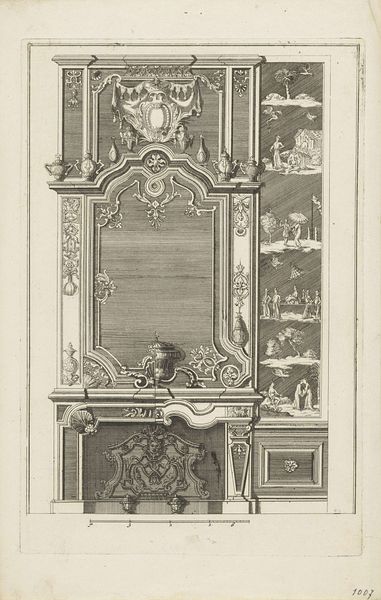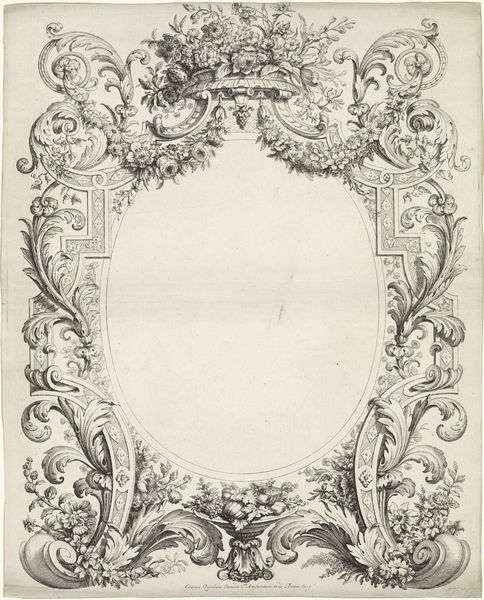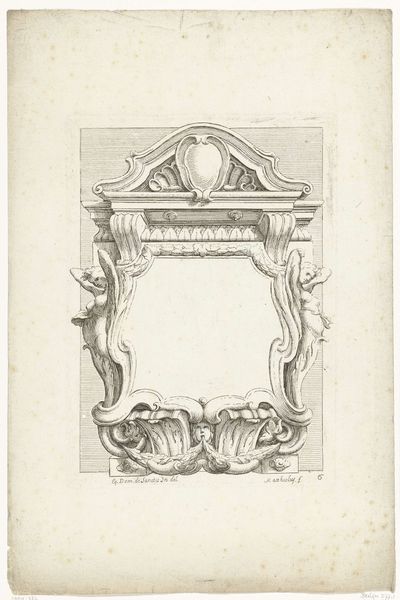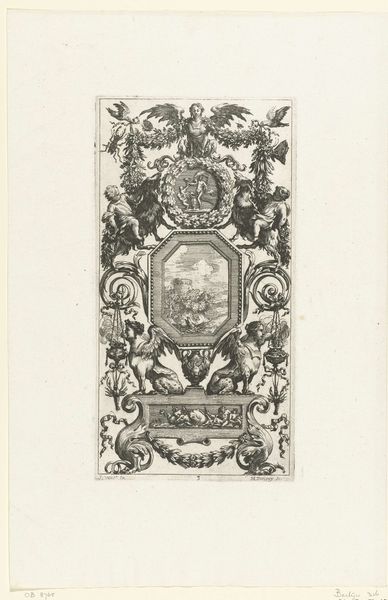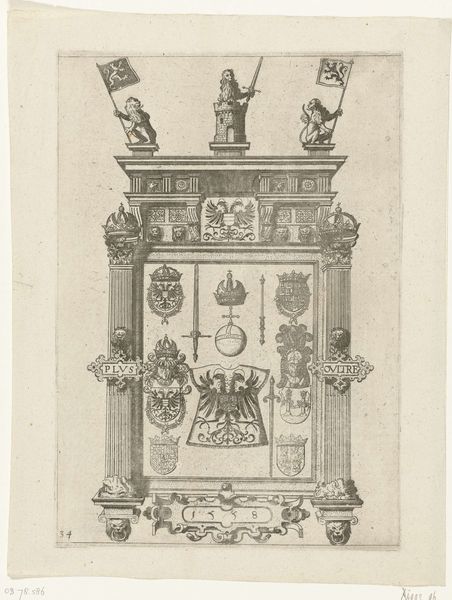
drawing, relief, paper, ink, pencil, mural
#
portrait
#
drawing
#
allegory
#
relief
#
paper
#
ink
#
geometric
#
classicism
#
pencil
#
history-painting
#
academic-art
#
mural
Dimensions: height 423 mm, width 260 mm
Copyright: Rijks Museum: Open Domain
Gerrit Lamberts made this design for a grave monument around the turn of the 19th century in the Netherlands. The elaborate monument is replete with symbols referencing the life and death of Anthony Pieterson. But consider the wider social context. In the late 1700s, the Dutch Republic was in decline, facing economic stagnation and political divisions. The Batavian Revolution, inspired by the French Revolution, sought to overthrow the old order, introducing new ideas about citizenship and governance. Against this backdrop, the design of grave monuments became a way for families to assert their social status and commemorate their lineage, reflecting a desire for stability and continuity in a time of upheaval. The eagles, cherubs, and coat of arms reflect conservative values. To fully understand such an artwork, we rely on archival research, genealogical records, and studies of Dutch social history. By exploring these sources, we can gain insight into the complex social and institutional forces that shaped this design and its meaning within Dutch society.
Comments
No comments
Be the first to comment and join the conversation on the ultimate creative platform.
